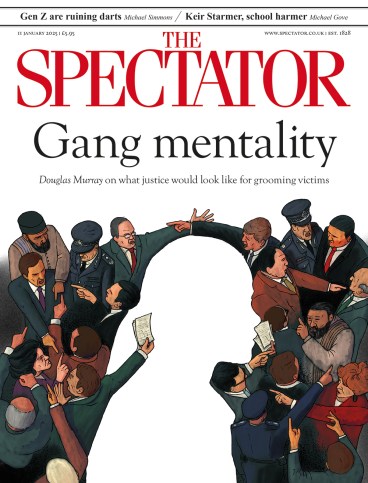
Catherine Lafferty has narrated this article for you to listen to.
How did the depraved cruelty of Britain’s grooming gangs go on for so long, so openly and with such seeming impunity? One overlooked but vitally important element of the scandal is that over the past 30 years the lines of defence girls had against sex crimes were deliberately taken down in the drive to reduce the country’s number of teenage pregnancies.
Britain’s stubbornly high teenage pregnancy rate was the stuff of dozens of newspaper columns
The first and most important line of defence any girl will have against male predation is usually her own family. The first step in dismantling these defences came in 1985 when Victoria Gillick, a Catholic housewife, wanted assurances from her local health authority that her underage daughters would not be given contraceptives without her knowledge and consent. She lost the case and consequently the Law Lords, led by Lord Fraser, set new guidelines under which underage sex would be officially tolerated as long as pregnancies were prevented.
The Fraser guidelines were hailed by the teen sex lobby, which claimed they would usher in a world of empowered young women and falling teenage pregnancy rates. But things didn’t go according to their confident forecasts and by 1997 Britain’s stubbornly high teenage pregnancy rate was the stuff of dozens of newspaper columns and radio phone-ins.
What to do next was obvious: intensify the policy. The incoming Blair government gave itself a ten-year strategy to halve teen pregnancy rates. There were taskforces, advisory groups, interim targets, targets, annual reports, workshops and drop-in centres.
Confidentiality was central to the teenage pregnancy strategy. Yet secrecy is also an abuser’s most effective cloak. A court case in the mid-2000s expanded the boundaries of teenage sex confidentiality even further. Like Gillick, it was brought by another mother called Sue Axon, who fought a legal battle for parents to have the right to know if their underage daughters were being given abortion advice. Axon lost her case in 2006. It had been opposed by the then health secretary Patricia Hewitt, who in an earlier incarnation had been general secretary of the National Council for Civil Liberties when it was friendly with the Paedophile Information Exchange, as well as by the Family Planning Association (FPA). ‘Confidentiality is the single most important factor in a young person’s decision to visit a health service,’ said Anne Weyman, chief executive of FPA. ‘Compulsory parental notification of their visit would have been a disaster.’
That was not a view that would be shared by the authors of the Rochdale Serious Case Review, which reported in 2013 that ‘the drive to reduce teenage pregnancy… is believed to have contributed to a culture whereby professionals may have become inured to early sexual activity in young teenagers’.
The conflict between what was officially recommended as best practice for preventing pregnancies in underage girls and their safeguarding best interests is illustrated by a bland paragraph in the Rochdale review about a grooming gang victim being seen by one official agency. ‘Other problematic practice included lack of referral in relation to 13 year old regarding under age sexual activity,’ it said, adding: ‘Name of uncle attending with her not recorded.’ It must be grasped that this was far from problematic behaviour as far as the Teenage Pregnancy Strategists were concerned: concerns about rape and serious sexual abuse very much took second place to preventing pregnancies by any means necessary.
Multiple serious case reviews found the focus on driving pregnancy rates down with confidential contraception and abortions meant that teenage girls who presented signs of sexual exploitation were dismissed because the assumption was that underage sexual activity was harmless, so long as the risk of pregnancy was minimised. Torbay’s Serious Case Review observed: ‘Underage sexual activity by young people between 13 and 16 years old is judged on the perception that if it takes place with partners of a similar age, it is by mutual consent. This perception has to be reconsidered in light of the growing evidence in this case that the abusers were not much older than the girls.’ Revelations continue rolling in. GB News have reported that one victim claims she was forced by a male police officer to take the morning-after pill when she reported her abuse.
In October 2005, the then education secretary, Ruth Kelly, tried to reverse the tide by proposing that every time anyone under the age of consent asked for advice on sex, contraception and abortion, the police would be notified. Her suggestion was shot down in flames by the teen sex lobby. ‘Any erosion of young people’s rights to confidential sexual health advice and treatment would be disastrous,’ said Jan Barlow, the chief executive of the Brook sexual health advisory centres.
It is clear now that the official recommendation as best practice for preventing pregnancies in underage girls was in direct conflict with safeguarding their best interests. Yet, according to the prevailing Fraser regime, the agencies that had declined to notify the police about underage sex had done nothing wrong.







Comments